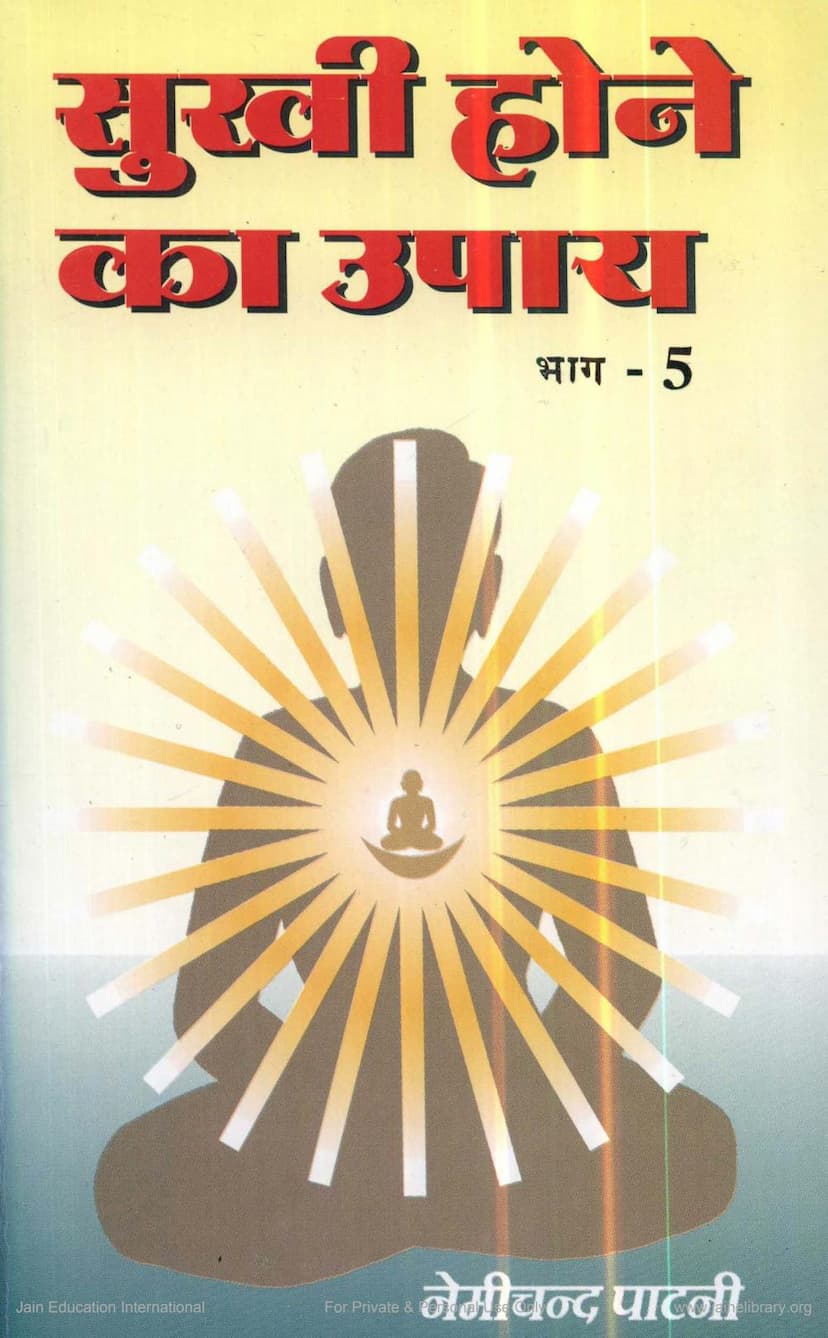Sukhi Hone Ka Upay Part 5
Added to library: September 2, 2025

Summary
Here's a comprehensive summary of "Sukhi Hone Ka Upay Part 5" by Nemichand Patni, based on the provided text:
This book, "Sukhi Hone Ka Upay Part 5," is the fifth installment in a series by Nemichand Patni, following Parts 1 through 4 published between 1990 and 1994. It continues the discussion on achieving happiness, which is identified as being solely through self-realization (Atmanubhuti).
Core Theme and Objective:
The central aim of this book, and the entire series, is to guide the reader towards achieving true happiness through understanding the self and its true nature. This involves a process of Bhed-Vigyan (discrimination or discernment) between the eternal self (the knower, the soul) and its transient, changing states (the known, the modifications). The ultimate goal is Atmanubhuti (self-realization or experience of the self).
Key Concepts and Progression from Previous Volumes:
- Part 1: Focused on the fundamental principles of the universe, the nature of the six realities (dravy as), and the soul's relationship with them, emphasizing the soul's distinct existence from other substances.
- Part 2: Delved into the inner states of the soul, the importance of Bhed-Vigyan, and the methodology for attaining self-knowledge. It explained the necessity of the five "labdhis" (attainments) and the nature of the four "anuyogas" (commentarial traditions).
- Part 3: Focused on understanding the self as the "knower" (gyatritattva) and elaborated on the self's true nature by using the example of an Arhant's soul as an ideal. It emphasized the importance of the Naya (standpoint) knowledge, particularly the distinction between Nishchaya Naya (absolute/ultimate standpoint) and Vyavahar Naya (conventional/practical standpoint), and how to use them to realize the self.
- Part 4: Built upon the previous discussions, primarily based on commentary on Shrimad Kundakunda's Samaysar, Gatha 144. It explored the soul's knowledge-nature (gyansvabhav), how it knows objects (gneyas) without being affected by them, and the principle of Anekanta (non-absolutism) and Syadvada (conditional predication) in understanding the self. It explained the difference between the knower (gyatritattva) and the known (gneyatattva).
Content of Part 5:
This volume, "Sukhi Hone Ka Upay Part 5," focuses on the final stage of Deshanalabdhi (attainment of right understanding through listening to the teachings), specifically on Bhed-Vigyan of the Knower (Gyatritattva) from its Modifications (Paryayas) through Discriminative Knowledge.
The book aims to explain:
- The Indissoluble Unity and Essential Difference between Substance (Dravya) and Modification (Paryaya): It addresses the apparent paradox of how substance and modification, being one "sat" (entity), can have different natures (eternal vs. transient) and how to reconcile this through understanding. It highlights that while inseparable, the qualitative difference (bhava bhed) is real and crucial for Bhed-Vigyan, particularly for the impure soul.
- The Utility of Naya Knowledge in the Path to Liberation: It elaborates on how Naya knowledge, particularly the application of Dravyarthika Naya (viewpoint focusing on substance) and Paryayarthika Naya (viewpoint focusing on modifications), and the consequential use of Nishchaya Naya and Vyavahar Naya, are essential tools to understand the soul's true nature.
- Understanding the Self as the Knower (Gyatritattva): It stresses that the true self is the eternal, unchanging Knower, distinct from all transient modifications and external objects.
- The Role of Ideal Examples: The souls of Arhants and Siddhas are presented as the perfect examples of the soul's potential and actualized nature, guiding the seeker on how to understand their own true self.
- The Nature of Knowledge and the Known: It clarifies how knowledge functions, distinguishing between the knower, the act of knowing, and the known, and how to correctly discriminate between them to avoid attachment and suffering.
- The Foundation of Bhed-Vigyan: It explains that the understanding of the essential difference between the eternal self and its transient states is the basis for true discrimination.
- The Importance of Faith and Understanding: The book emphasizes that mere intellectual understanding is insufficient; it must be accompanied by unwavering faith in the teachings (Jinvani) and a deep conviction leading to a change in one's perspective.
- The Significance of Vitaragta (Non-attachment/Passionlessness): Ultimately, the path to happiness is identified as the progressive eradication of passions and the realization of an inherent state of Vitaragta.
Author's Approach and Motivation:
Nemichand Patni attributes his insights to his 40-year association with spiritual luminary Shri Kanji Swami. He emphasizes that his writings are not for personal acclaim but for purifying his own understanding and sharing the profound truths of Jain philosophy. He acknowledges limitations in language and grammar but urges readers to focus on the depth of the spiritual message.
Overall Purpose:
The book serves as a guide for spiritual seekers (Atmarthis) to understand their true nature, overcome worldly attachments and suffering, and ultimately achieve the state of self-realization and eternal bliss. It systematically builds upon the concepts introduced in previous volumes, leading the reader towards a deeper understanding of the spiritual path outlined in Jain scriptures.